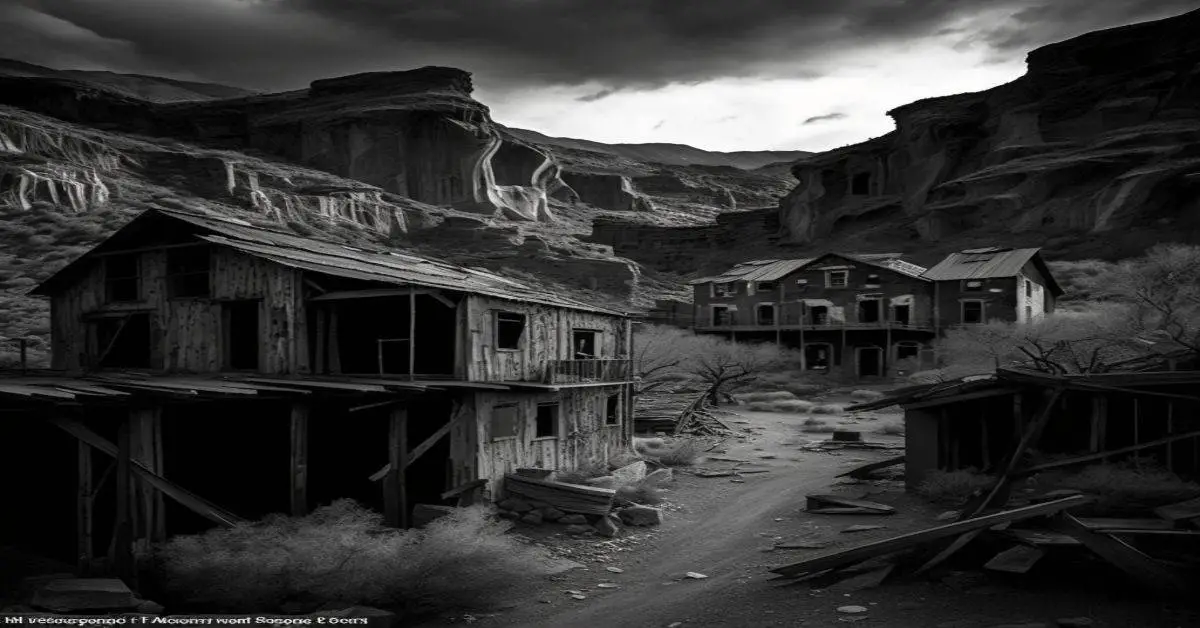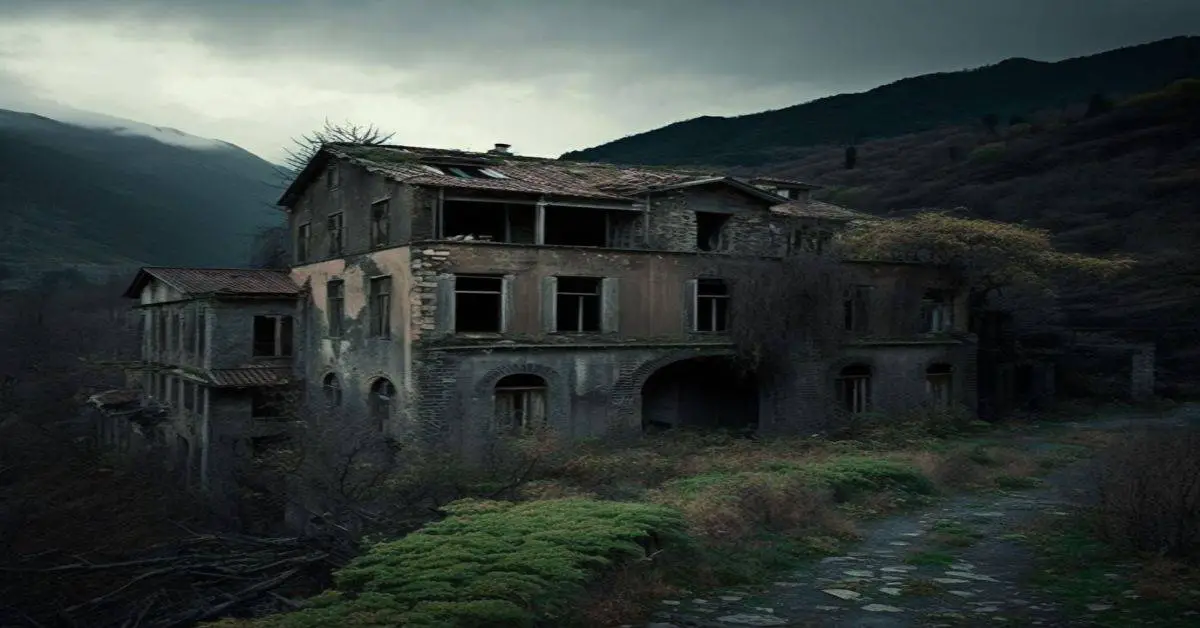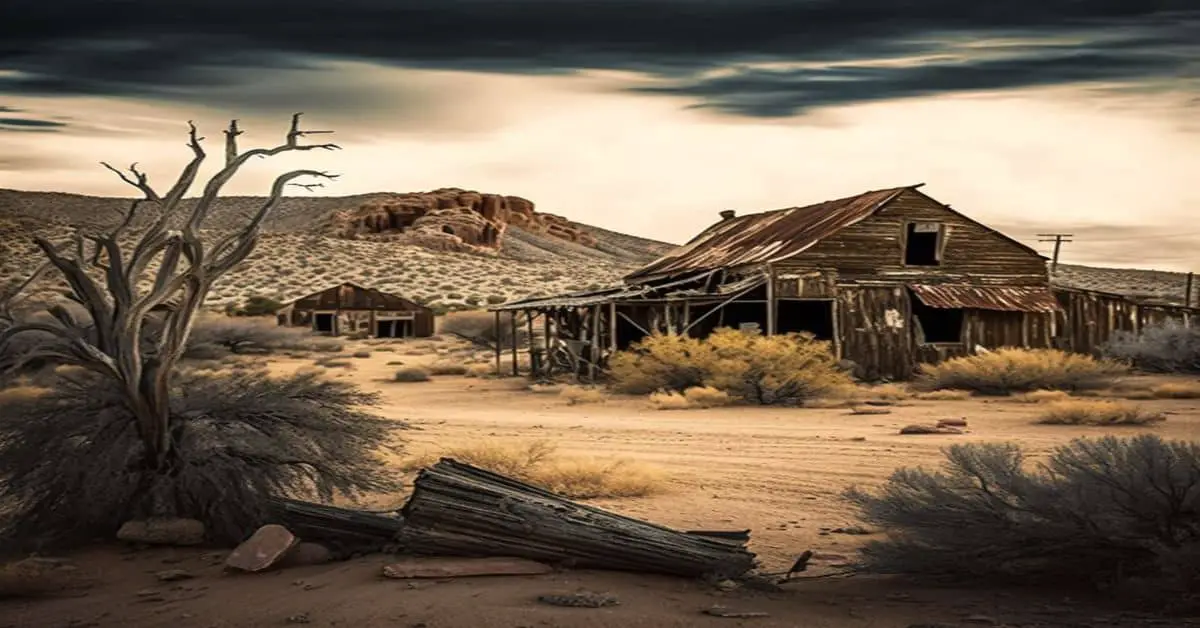Second Garrotte, a ghost town in Tuolumne County, California, is known for its dark and fascinating history. The town is home to two landmarks that symbolize its past – the Hanging Tree and Bret Harte’s cabin.
While it’s uncertain if the famous writer ever lived in the area, his cabin from 1853 still stands to this day, drawing visitors from all over the world. However, it’s the Hanging Tree that has become the most infamous feature of Second Garrotte, with at least 60 people hanged from its branches over the years.
Despite its gruesome history, Second Garrotte, California, has become a popular tourist destination for those interested in exploring the darker side of American history. Visitors can walk the same streets that outlaws and gold rush miners once roamed and see the landmarks that tell the tales of the town’s past.
Whether it’s the Hanging Tree or Bret Harte’s cabin, Second Garrotte offers a unique glimpse into the lives of those who lived in the Wild West, and the events that shaped their history.
In this article, we will explore the dark history of Second Garrotte, focusing on the Hanging Tree and Bret Harte’s cabin, and the role they played in shaping the town’s past.
Key Takeaways
- Second Garrotte is a ghost town in Tuolumne County, California with historical significance.
- The town is home to two landmarks: Bret Harte’s cabin and the Hanging Tree, where at least 60 people were hanged.
- Visitors can explore the streets once roamed by outlaws and gold rush miners and learn about the town’s dark past.
- The Hanging Tree remains a popular attraction and symbol of the town’s history, though its history and significance are controversial.
Bret Harte’s Cabin
The town of Second Garrotte boasts the Bret Harte cabin, built in 1853 and still stands today. Its historical significance stems from the fact that Bret Harte, a renowned American author, may have lived there at some point. Despite lacking concrete evidence to support this claim, the cabin remains a testament to Bret Harte’s legacy and serves as a focal point for historic preservation efforts in the town.
Over the years, the Bret Harte cabin has undergone several restoration projects to ensure its preservation. The cabin’s rustic appearance and simple design reflect the humble origins of the town, and its continued existence is a testament to the community’s commitment to preserving its history.
Although the exact role of Bret Harte in the cabin’s history remains uncertain, the structure’s historical significance and its connection to the town’s past make it a cherished landmark in Second Garrotte.
The Town of Groveland
Groveland, originally known as Garrote, was renamed after a notorious horse thief was executed there. The town is located in Tuolumne County, California, and is known for its rich history. Groveland was first settled in 1849 during the California Gold Rush, and it was once a thriving mining town. Today, it is a popular tourist destination that offers visitors a glimpse into its fascinating past.
Here are some historical landmarks in Groveland that are worth visiting:
- The Groveland Hotel – built in 1849, it is the oldest hotel still in operation in California.
- The Groveland Yosemite Gateway Museum – a small museum that showcases the town’s history, including its role in the Gold Rush and the building of the Hetch Hetchy Dam.
- The Hanging Tree – a symbol of the town’s dark past, the Hanging Tree is where at least 60 people were hanged. It is a popular attraction that reminds visitors of the town’s history and its connection to the wild west.
The Infamous Hanging Tree
Located in Tuolumne County, the infamous hanging tree in Second Garrotte symbolizes the town’s dark history.
The hanging tree, located in nearby Groveland, is a popular attraction and a must-see for tourists.
The tree is a reminder of the town’s past, where at least 60 people were hanged, and is a unique feature of Second Garrotte.
The history and significance of the hanging tree have sparked controversy among tourists.
While some view the tree as a fascination and a reminder of the town’s past, others argue that the tree is a dark and disturbing symbol.
Regardless of opinions, the hanging tree remains a popular attraction and a significant part of Second Garrotte’s history.
Frequently Asked Questions
How did the hanging tree become such a popular tourist attraction in Second Garrotte?
The Hanging Tree in Second Garrotte has become a popular tourist attraction due to its historical significance as a site where at least 60 people were hanged. This unique feature draws visitors interested in the town’s dark past and fascination with the tree’s notoriety in American folklore.
What was the main reason that the town of Garrote changed its name to Groveland?
The town of Garrote changed its name to Groveland in honor of a horse thief who was hanged there. This name change was significant in the town’s history and reflects its past as a place of justice and punishment.
Are there any ghost stories or paranormal activity associated with Bret Harte’s cabin or the hanging tree?
There is no credible evidence of paranormal activity or local legends associated with Bret Harte’s cabin or the hanging tree in Second Garrotte. Their historical significance appears to be limited to their respective roles in the town’s past.
How did the town of Second Garrotte come to be abandoned and become a ghost town?
Like many towns in the Wild West, Second Garrotte was abandoned due to economic decline in the late 1800s. Abandoned structures remain as a reminder of its past, without any known paranormal activity.
Have any efforts been to preserve or restore Bret Harte’s cabin or the hanging tree as historical landmarks?
Efforts for preservation and restoration plans of Bret Harte’s cabin and the hanging tree in Second Garrotte are unclear. It is unknown whether any formal initiatives have been taken to maintain these historical landmarks.


